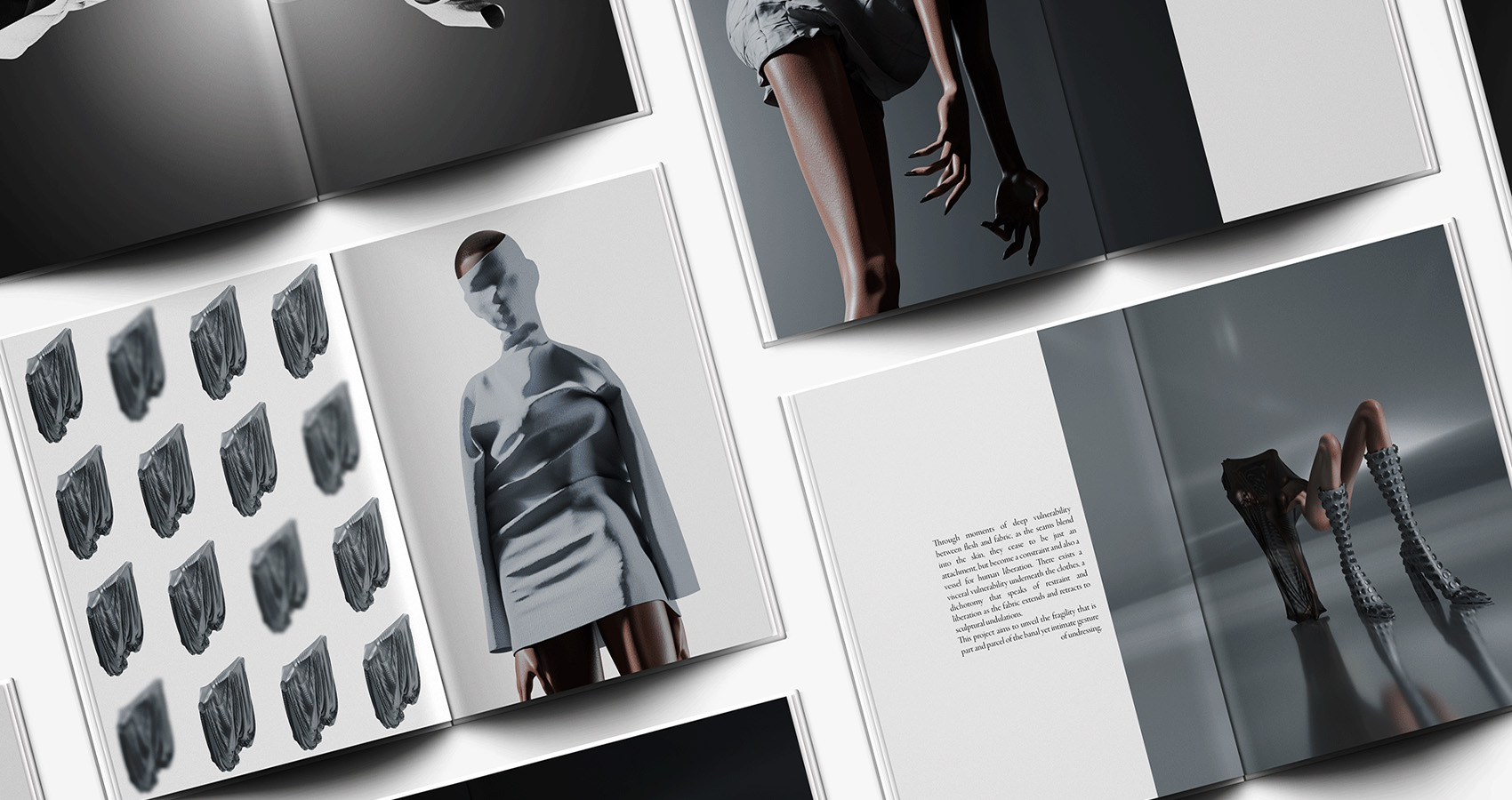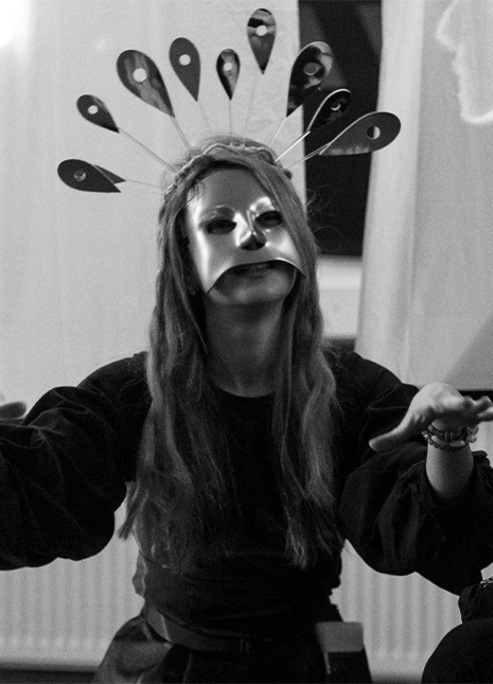Un_Veiled: Fashion As Ritual, Memory, And Digital Sculpture
Exploring vulnerability through 3D fashion and digital art.
Clothing isn’t just cloth. For the artist behind Un_Veiled, Elizaveta Dubova, garments are vessels, constraints, and confessionals—sculptures in motion that hold both memory and melancholy.
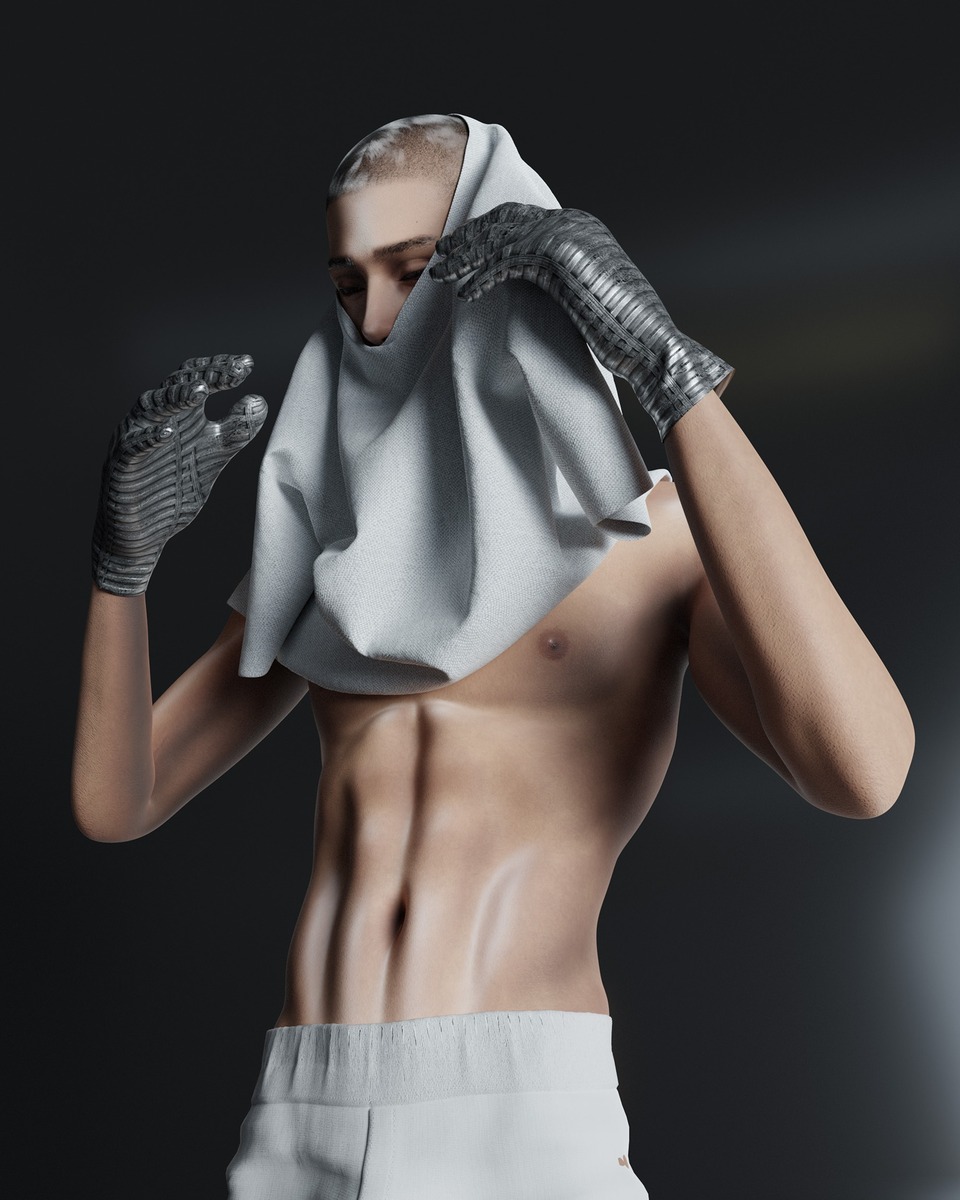
The project, which lives in meticulously rendered 3D spreads, treats dressing and undressing not as routine but as ritual, exposing the intimate tension between safety and exposure.
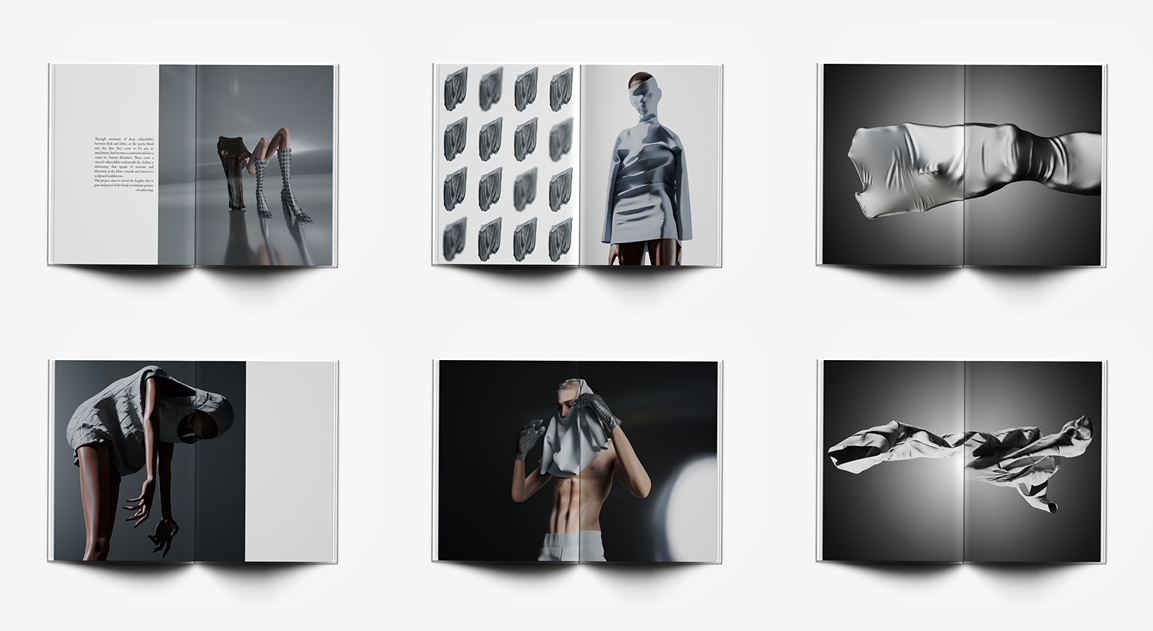
That tension has always haunted fashion. But here, it’s pushed further. Polished digital precision collides with tactile vulnerability, pulling viewers into a space where fabric moves like breath and folds carry trauma.
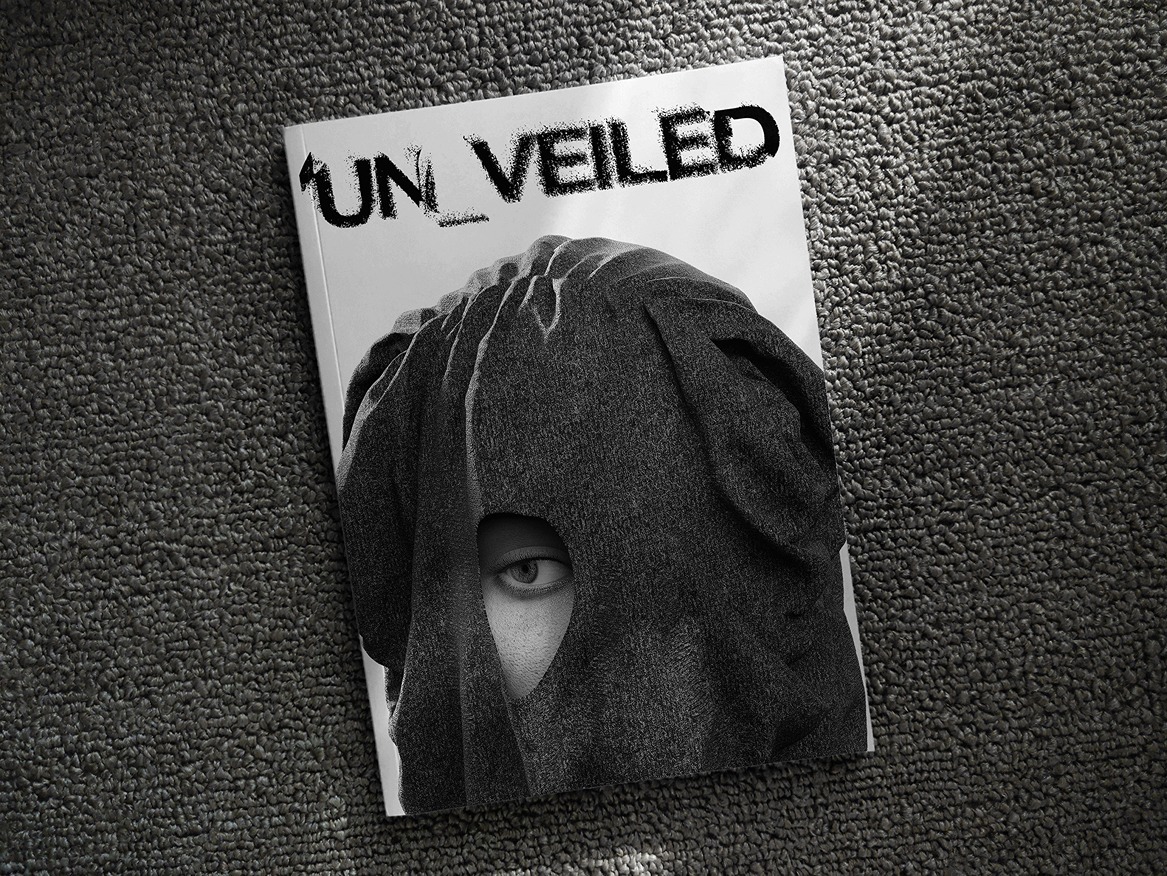
“There’s oftentimes a lot of trauma stored in clothes,” Elizaveta explains. “I wanted to transform the pain rather than inflict it, simulating garments as a release of tension rather than a clamp that holds it in.”
Rituals, Gazes, and Ghost Fabrics
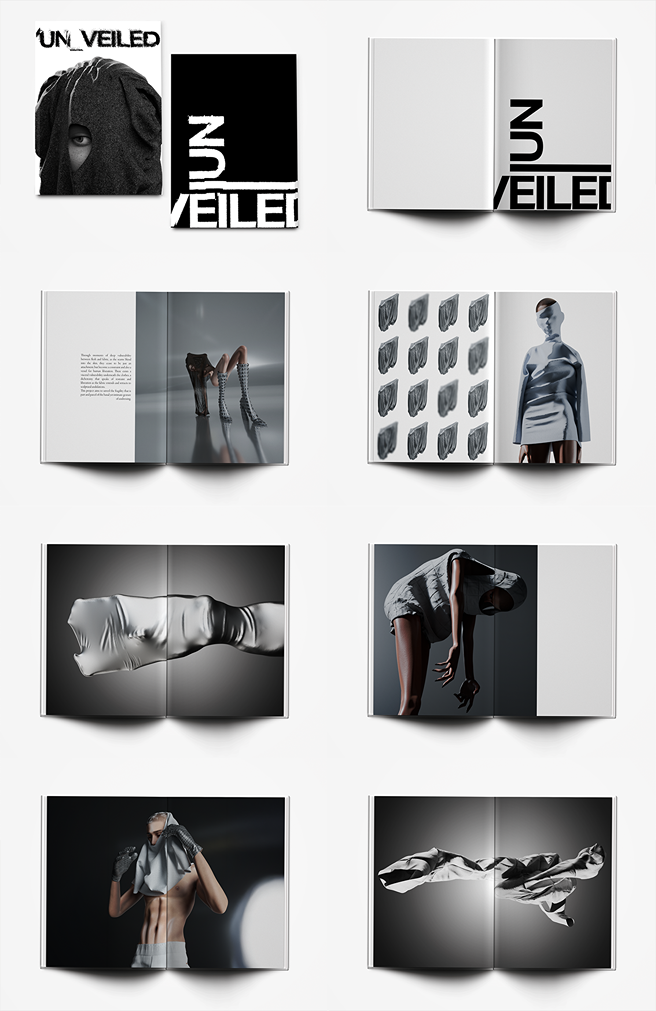
Instead of chasing a workflow, Un_Veiled leaned into unpredictability. In cloth simulation software, no two drapes ever fall the same way—rendering routine impossible.
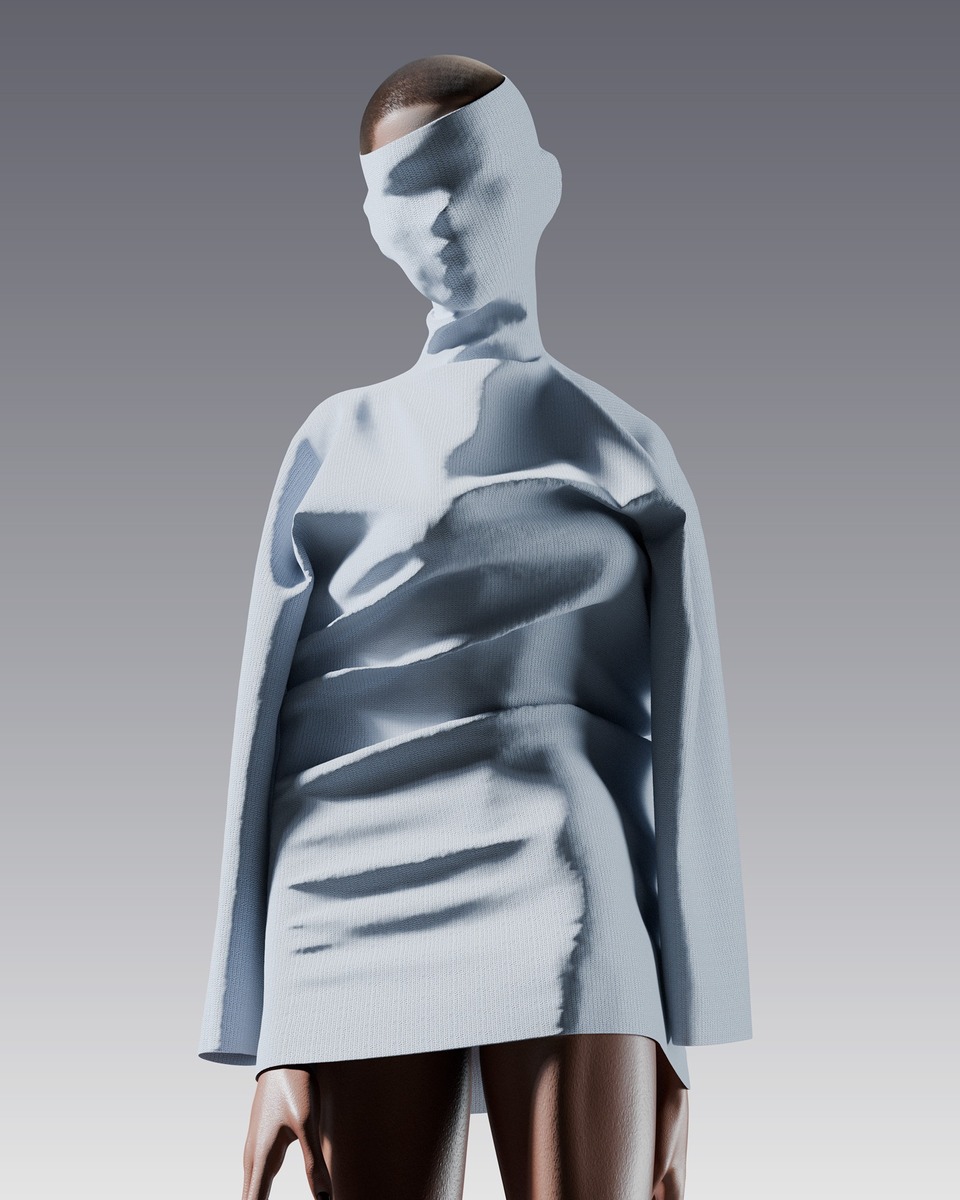
That unpredictability becomes ritual, an act of unveiling. “If a render feels inviting yet uncomfortable, then I know it’s successful,” they note. “Seductiveness in the pose, fabric that ties it all together—it makes the audience feel like intruders.”
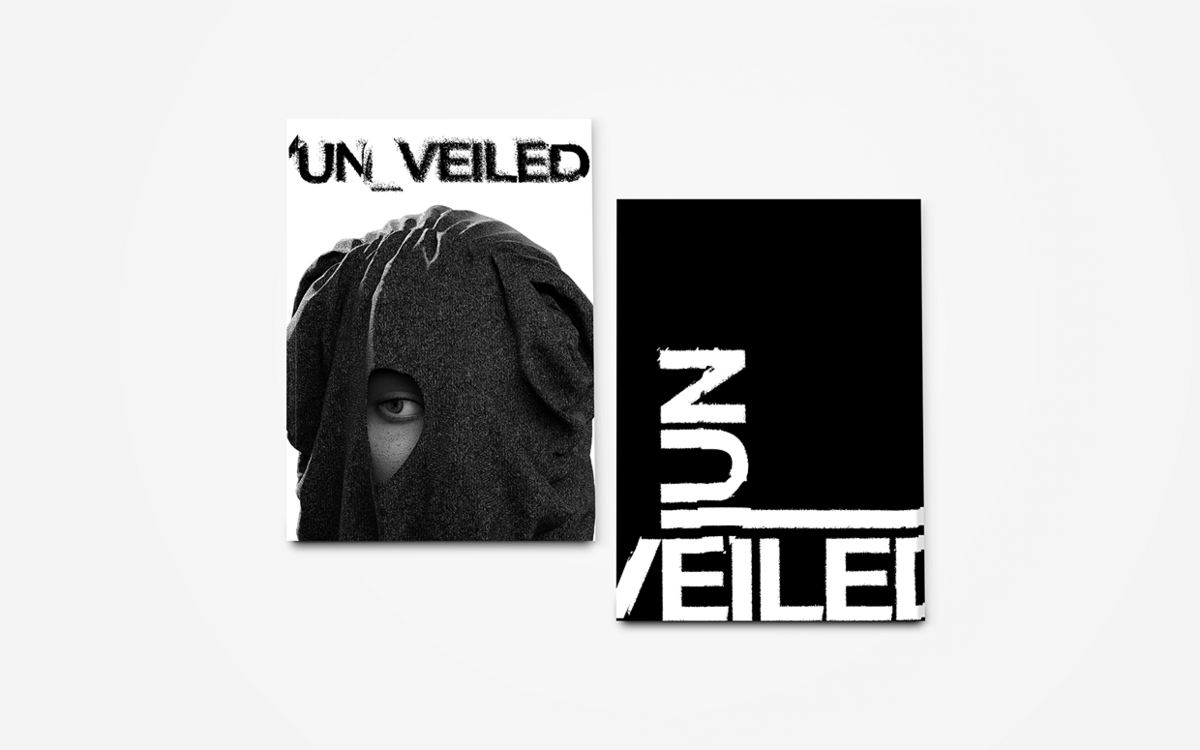
The gaze is crucial. These spreads don’t just want to be seen, they want you complicit. The imagined onlooker becomes part of the piece, tangled in the same systems of power fashion has always trafficked in. Who gets to look? Who gets looked at? “The gaze of others creates more risk and vulnerability,” the artist says. “It makes each render more intimate, knowing that someone else’s eyes are on something that shouldn’t be seen.”
Beyond Fashion’s Surface
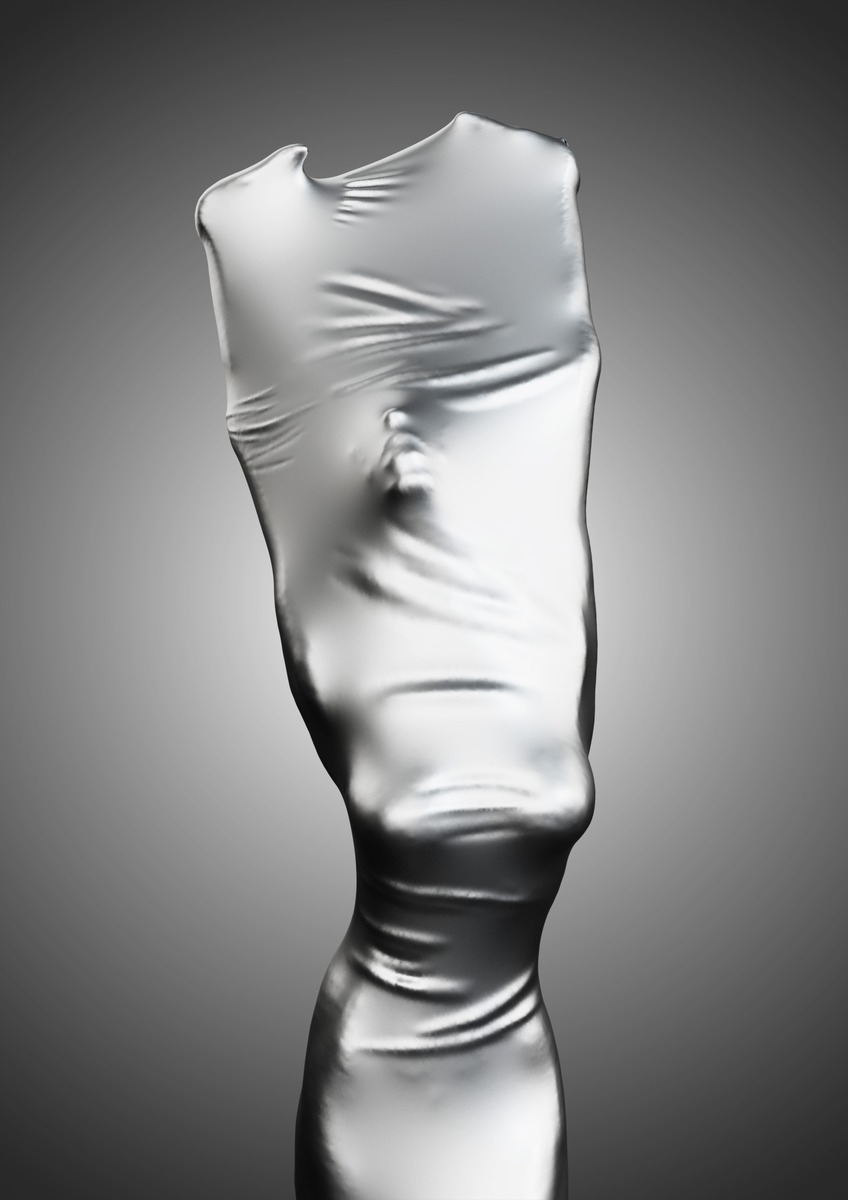
Muted whites and clinical grays dominate the palette, shadows pressed into folds like secrets. The sterility is deliberate, a counterpoint to warmth. “Bright colors would feel too intrusive,” they explain. “Sterility conceals, warmth exposes. Both are needed.” In that push and pull, fashion’s role as both vessel and shackle becomes clear.
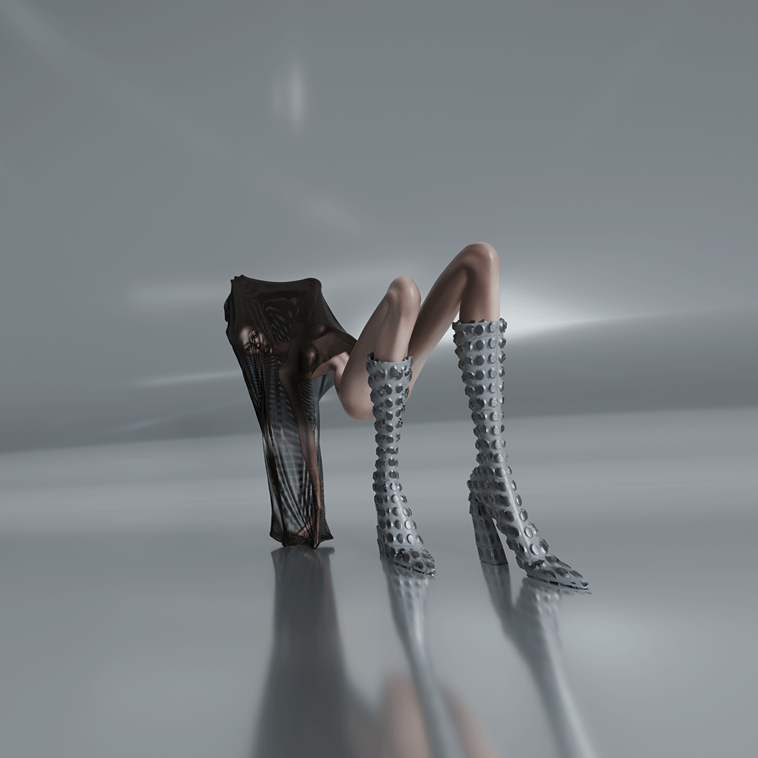
Though not conceived as critique, Un_Veiled inevitably challenges fashion’s myth of surface beauty. Clothing here is unstable, a threshold between who we were and who we’re becoming. “It’s deeply personal,” the artist admits. “That can be both empowering and a curse.”
Toward Immersion
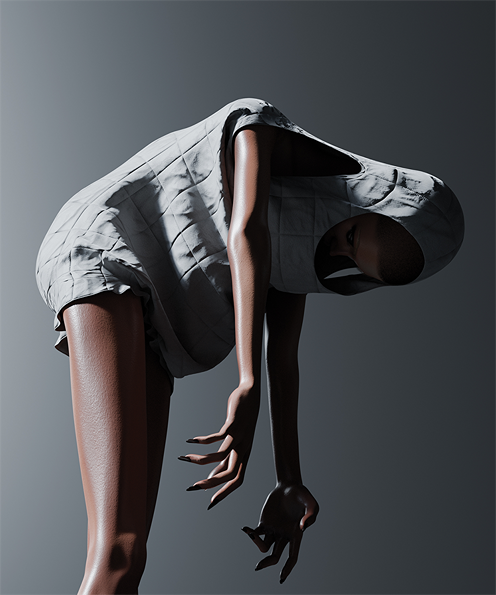
The spreads suggest more than static images—they gesture toward future forms. Installation, performance, maybe even interactive space. “I’d want the audience to feel confrontation with their own veil,” the artist says. “We’re all hiding, showing, and performing with our clothes. To feel both the constraints of fabric and its release would bring harmony and peace.”
In Un_Veiled, fashion becomes more than aesthetic—it becomes a mirror, a wound, a ritual. The garments breathe, but only because the body beneath them dares to be seen.



